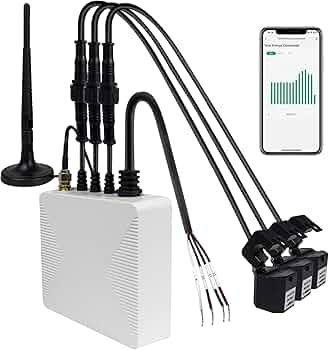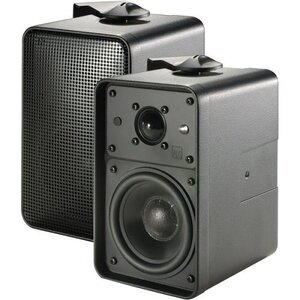What Exactly is “heb_ts-doa-p_1_18”?
You might have stumbled upon “heb_ts-doa-p_1_18” and wondered what it even means.
Is it a product code? A tech term? A cryptic string of letters and numbers?
Well, in short, it’s a specific identifier that could relate to various things in different contexts.
Let’s break it down and get a better understanding of why this odd-looking code is crucial in certain industries.
The Mystery Behind “heb_ts-doa-p_1_18” Unveiled
If you’ve found yourself Googling “heb_ts-doa-p_1_18” for answers, you’re not alone.
It might seem like a complex code, but it’s quite common in fields like manufacturing, logistics, or even tech.
Each component of this string likely has a distinct meaning, and its purpose could vary depending on where you see it being used.
Let’s use an example to show how this works.
Real-World Application of “heb_ts-doa-p_1_18”
Imagine you’re looking at an inventory management system.
You see “heb_ts-d oa-p_1_18” listed under a product, and you start wondering what it actually stands for.
Here, it could represent a version or a batch number of a product.
The letters might denote the product’s category, while the numbers are identifiers for specific variations or updates.
It’s a similar approach used by manufacturers to track products through different stages of production.
Why Does It Matter?
Understanding this specific string can have real-world impacts. For example, when dealing with product recalls or software updates, knowing the exact version or batch number can save time and reduce errors.

How “heb_ts-doa-p_1_18” Fits into the Bigger Picture
Alright, so it might seem like an isolated piece of data, but “heb_ts-doa-p_1_18” plays a role in something much bigger.
Let’s say you’re looking at a supply chain.
Every product along that chain is tracked and identified by similar codes. This way, every team involved in manufacturing, shipping, or selling knows exactly which batch or version they’re dealing with.
It’s like a digital fingerprint for a product or part—without it, chaos would ensue.
Breaking Down the Components of “heb_ts-doa-p_1_18”
Let’s get a bit more analytical here and break this down further.
- “heb” might refer to the manufacturer or a part category.
- “ts” could denote a specific type or specification of the product.
- “doa” could stand for “dead on arrival,” used often in tech or electronics when tracking defective items.
- “p” likely marks the product’s variant or version.
- “1_18” could be a version number or release identifier.
Every part of this string works together to help track, identify, and categorize a product or item at a very granular level.
Real-Life Scenarios Where “heb_ts-doa-p_1_18” Comes into Play
Let’s take a real-life example of a tech company that uses codes like “heb_ts-doa-p_1_18.”
If they’re shipping out thousands of laptops, each one might have a unique identifier. That identifier helps trace the laptop back to the assembly line, the specific hardware version it carries, and the software it runs.
Imagine you receive a laptop, and it doesn’t work properly. By using the identifier, the company can quickly determine if the issue is related to that specific batch.
Tracking codes like “heb_ts-doa-p_1_18” help avoid the headache of returning every laptop—they know exactly which one needs attention.
Why You Need to Pay Attention to “heb_ts-doa-p_1_18”
Whether you’re a buyer or seller, understanding this code can save time and reduce confusion.
By identifying the version or batch number quickly, you can avoid common mistakes such as shipping outdated versions or troubleshooting the wrong model.
For example, if you sell tech products online, knowing this code means you can pull up detailed specs instantly.
Instead of hunting down details, everything you need is right there—efficiency at its finest.
How “heb_ts-doa-p_1_18” Can Help with Inventory Management
For companies dealing with large amounts of stock, keeping things organized is key.
Inventory management systems often use codes like “heb_ts-doa-p_1_18” to track every item, ensuring that items are properly categorized.
It’s essential for quick updates and audits. Imagine you run a store, and a customer asks for a specific model of a tablet.
With the right tracking system in place, you don’t need to guess—it’s all there, with precise details at your fingertips.
FAQs: Everything You Need to Know About “heb_ts-doa-p_1_18”
What does “heb_ts-doa-p_1_18” mean in a product catalog?
In a product catalog, “heb_ts-doa-p_1_18” could denote a particular batch or model version. It helps with easy identification, inventory management, and tracking product variants.
How does “heb_ts-doa-p_1_18” impact shipping and delivery?
If you’re in shipping or logistics, “heb_ts-doa-p_1_18” makes it easy to trace a product’s journey. The code can reveal details about the item, such as whether it’s a defective model or the correct batch for a customer order.

Can “heb_ts-doa-p_1_18” be used in all industries?
While the format of the code might differ, the concept of using batch or version numbers is universal. It’s common in industries like tech, manufacturing, and even retail.
How can I track a product using “heb_ts-doa-p_1_18”?
You would typically enter the code into an inventory or tracking system. The system would then provide you with detailed information about that specific product, such as its version or batch history.
Wrapping Up: The Power of “heb_ts-doa-p_1_18”
So, whether you’re in tech, retail, or manufacturing, “heb_ts-doa-p_1_18” serves as a key piece of data.
It’s not just a random jumble of letters and numbers.
It’s a system designed to streamline processes, track products, and avoid mistakes. The next time you see a string like “heb_ts-doa-p_1_18,” you’ll know it’s more than just a code. It’s the unsung hero of efficient product management.
Remember, this seemingly cryptic code ensures that everything runs smoothly behind the scenes, from manufacturing to shipping, right into the hands of the customer.














Post Comment